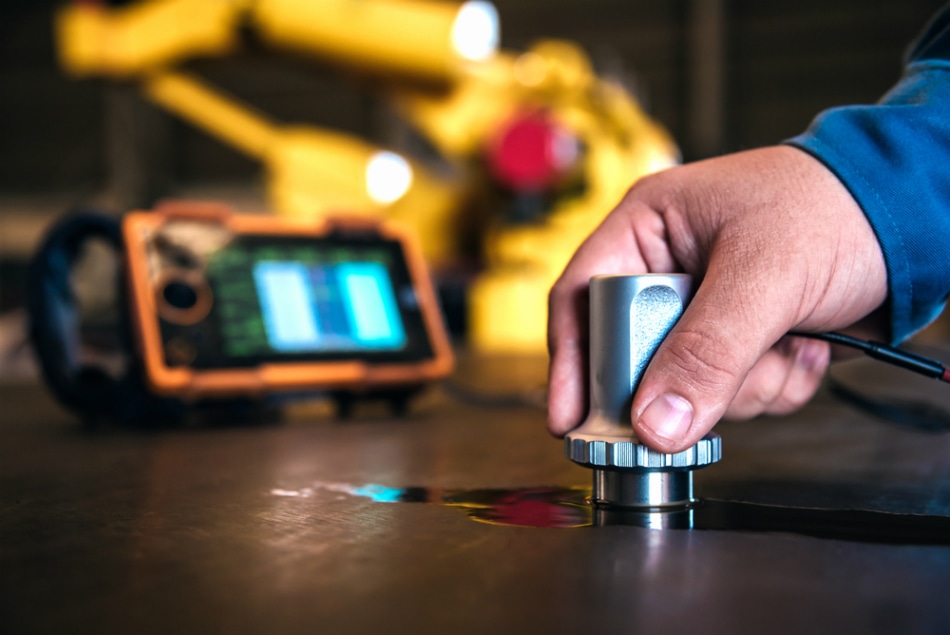What is NDT?
NDT which stands for Non-Destructive Testing is a form of assessment in which inspectors are able to analyze and collect data about a material without bringing any damage to it.
In other words, the NDT form of inspection is a testing technique that is implemented to evaluate material, and analyze its properties and components, in order to track down any defects without causing any damage or alteration to the material itself.
NDT is also called a Non-Destructive Examination (NDE), Non-Destructive Inspection (NDI), and Non-Destructive Evaluation (NDE). Generally, Third-Party Inspection Agency has in-house NDT Testing Training for their Inspectors. Because of Third-Party Inspection of NACE CODE – 17 / 18 / 28, Steel Structures, Pressure vessels, Railway components, Automotive Equipment, Oil & Gas Industry, etc so on. -NDT Testing is the most common requirement. There are many types of NDT testing, but the most common NDT Testing widely used in Third-Party Inspection is given below, but it is not Limited.
Types of Non-Destructive Testing
There are various types of NDT available, each with its own advantages and disadvantages. The seven most common ones are listed below:
1) Ultrasonic Testing
In this type of non-destructive testing, high-frequency sound waves are transmitted into a material which will aid in pointing out defects in the properties of the material.
2) Visual Testing
In this type of non-destructive testing, inspection and assessment are done simply through visual means or the naked eye. It is the most basic way of examining any material without bringing any damage or alteration to it.
3) Radiography Testing
In this type of non-destructive testing, radiation is passed through a test piece to analyze or detect any imperfections. X-rays are implemented on less dense materials whereas gamma rays are implemented on denser materials.
4) Magnetic Particle Testing (MT)
In this type of non-destructive testing, defects are analyzed and detected by examining disruptions in the flow of the magnetic field of the materials.
These disruptions are also indicators that point to the particular locations of the defects in the material.
5) Eddy Current (Electromagnetic) Testing
In this type of non-destructive testing, the strength of the electrical currents of a material is measured and analyzed in order to detect the defects of the material which may also give you the location of the defect too.
6) Liquid Penetrant Testing (PT)
In this type of non-destructive testing, the liquid is used to coat a material and defects are detected by looking for any breaks in the liquid.
7) Leak Testing (LT)
In this type of non-destructive testing, defects or imperfections are identified by analyzing or inspecting for any leaks in a vessel or a structure.
Why should you implement NDT?
Here are some reasons highlighted below as to why NDT should be implemented by companies:
a) Savings
In NDT, the materials are examined and analyzed for any defects in the materials without bringing any damage to the materials themselves. This, therefore, leads to saving costs and resources.
b) Efficiency
NDT allows for the assets to be examined for any imperfections or defects which is very important for ensuring that safe job practices are carried through in the workplace.
c) Accuracy
NDT techniques are proven to be accurate when it comes both to maintenance procedures as well as longevity of the materials.
Non-Destructive Testing can be conducted at each stage of construction. The materials or structures that are put to use can either be NDT approved or rejected or the materials can also be repaired.
NDT can provide great results when used correctly and effectively. There should be proper and correct knowledge of the various methods and their pros and cons, as well as the required standards for performing these tests.
